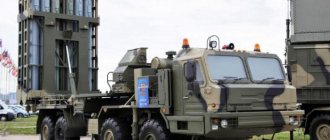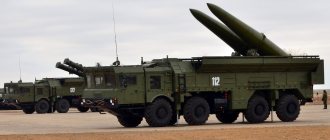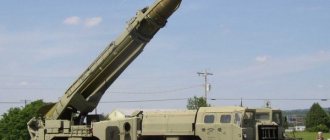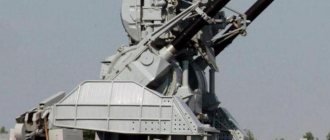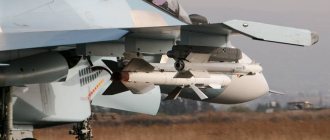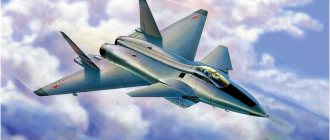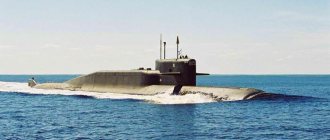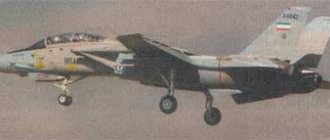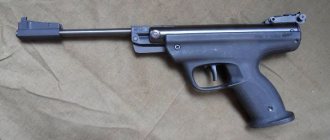In February 1975, the Council of Ministers issued a resolution calling for the development of the first self-propelled anti-aircraft missile system (SAM) in the USSR, called the 9K330 Tor. Over the years that have passed since the creation of the first models of the Tor air defense system, this family has been replenished with various modernized models of autonomous missile systems. All of them are designed to protect strategically important objects and to escort and protect moving troops. In addition to land-based systems, the Kinzhal air defense system was developed, the purpose of which was to protect warships.
History of the creation of 9K330 "Thor"
After the adoption of the resolution of the Council of Ministers, the defense industry of the USSR urgently began work on the creation of an air defense system. NIEMI of the Ministry of Radio Industry was responsible for the development of the Tor mobile anti-aircraft missile system. The following Soviet designers and enterprises were appointed responsible for various parts of the complex:
- V.P. was appointed chief designer responsible for the development of the complex. Efremov;
- I.M. was responsible for the development of the combat vehicle. Drize (Izhevsk Electromechanical Plant);
- The development of the rocket was entrusted to the Fakel design bureau.
In addition, many Soviet defense and radio-electronic enterprises participated in the development of the Tor air defense system.
Since new global wars were planned on a completely different plan than the previous ones, a new anti-aircraft missile system was needed that would correspond to the nature of the proposed military conflicts. The new Soviet air defense was not only supposed to carry out traditional tasks of combating enemy aircraft and helicopters. The list of targets that the Tor air defense system was supposed to fight was as follows:
- Airplanes and helicopters;
- Cruise missiles;
- Various guided bombs and other weapons that the alleged enemy might have.
In order for the characteristics of the new air defense system to meet all the requirements, it was necessary to develop a completely new radio-electronic system capable of tracking a wide range of enemy targets. Since the Tor mobile complex was supposed to accompany combat units of the army (mainly tank and infantry fighting vehicle platoons), it was decided to install it on a tracked chassis. This measure was also necessary due to the heavy weight of the air defense system. Due to the use of a tracked chassis, the idea of making the complex floating had to be abandoned.
The first 9K330 Tor air defense system appeared only in 1983. In the same year, the combat vehicle was sent to a test site. As a result of the tests, which lasted about a year, the tactical and technical characteristics of the Thor were not perfect, and the combat vehicle was sent for revision. It took about 3 years for improvements, and only in 1986 the 9K330 Tor anti-aircraft missile system was put into service.
Although serial production of “Tors” was carried out at the Izhevsk Electromechanical Plant, components for the new equipment were supplied by several enterprises:
- Minsk Tractor Plant (MTZ) supplied tracked chassis or platform;
- The Kirov Machine-Building Plant was engaged in the production of guided missiles;
- Many smaller components were manufactured by various defense and electronics companies.
All Tor complexes were sent to anti-aircraft regiments. Each regiment had 4 batteries, each of which had 4 9K330 Tor vehicles. In the first years after the air defense system was put into service, the Tors were used together with PU-12M control posts. All Tor complexes were supposed to protect strategic targets and troops on the march, although the Tor air defense systems could also be controlled from the regiment’s command post.
Too good
Factory bike No. 2, short.
Somehow one state really disliked another state. After which the first state began to seriously think about whether to smash the nuclear power plant of the second state to smithereens? However, this idea was never realized. One of the reasons for refusing an air strike on the nuclear power plant was the information that the air defense system of the power plant includes the Tor air defense system supplied by Russia. “The Russian air defense system can become a big problem,” overseas military experts succinctly commented on the situation.
Federal News Agency / Andrey Soyustov
This story had an indirect continuation.
Once, at an international military exhibition site, representatives of “Dome”, as they say, “locked tongues” with the developers of a foreign air defense system. After the initial exchange of pleasantries, the foreigners suggested that their complex, as a newer one, should be superior in performance characteristics to the Russian complex.
One of the directors of Kupol, who was present during the conversation, suggested that instead of exchanging statements, they should be tested in practice. "Duel! Let’s shoot!..” he said. And he explained his thought: “Let our complexes, under the same conditions, shoot at the same target simulators. And then we will compare the results.”
Foreigners were at first delighted with this offer, and then refused. “Simply because our complex is too secret,” said foreign developers. “Simply because Thor is too good,” the foreign argument was translated into IEMZ.
Perhaps we can finish the official part here and move on to the unofficial one. In other words, to personal observations and impressions.
Performance characteristics of the Tor anti-aircraft missile system
The base for placing all units of the 9K330 Tor air defense system is the 9A330 combat vehicle, which was produced on the GM-355 chassis, manufactured by the Minsk Tractor Plant. The chassis housed special equipment, as well as a rotary launch device, on which, in addition to the launcher for guided missiles, special antennas and locators were placed. The weight of the 9A330 combat vehicle was 32 tons, since the weight of the equipment was significant.
Thanks to the most powerful 840-horsepower diesel engine, the combat vehicle could maintain a high rate of movement and keep up with tanks and infantry fighting vehicles. The Thor's cruising range reached 500 km, and the maximum speed on the highway was 65 kilometers.
The combat vehicle also carried:
- Target detection station;
- Guidance station;
- A launcher equipped with 8 missile cells;
- A computer whose main task was information processing;
- Navigation system;
- Life supporting system;
- Electric generator and other useful little things.
The target detection station operated in all-round viewing mode, which alternately scanned various sectors. The onboard computer program set which sectors to view and in what order.
The front of the Tora turret had a phased array antenna, which was supposed to track the detected target and guide missiles at it. The command sensor for missiles, which was available in this system, made it possible to launch 1 or 2 missiles and then point them at the target.
Although the guidance station could determine the coordinates of the intended target with an error of up to 1 meter and automatically track a target that was at a distance of up to 23 km, it could only work effectively on one target. If necessary, two missiles could be fired at the same target at once, the main thing is that the interval between missile launches was at least 4 seconds.
The reaction of the mobile complex to the target was 8.7 seconds if the system was stationary, and 10.7 seconds when accompanying troops. The transition of the mobile complex from the traveling position to the combat state occurred in 3 minutes. To load the complex with new missiles to replace the used ones, it was necessary to spend about 18 minutes, and the loading of guided missiles took place using a special loading machine - 9T231.
Two weekends a year
The genesis of the 9A331MU combat vehicles of the new air defense systems is quite complex and whimsical.
First, Mytishchi Machine-Building Plant OJSC produces the GM-5955.15-01 tracked chassis. Then this chassis is transferred by rail to Izhevsk. From there the chassis travels by motorway to the IEMZ. “Dome” mounts the antenna-launching device and everything else on the chassis with the exception of the missile defense system.
After assembly, initial testing/calibration, after checking the product for resistance to high/low temperatures, humidity and dust, after step-by-step acceptance of all work by military representatives, the machine enters the factory line. It covers the required mileage over the dirt road and obstacles. Then again - tests/calibration, acceptance.
Then the car is driven onto the highway, covered with an awning and transported to the railway. The vehicle goes by rail to KapYar, where it undergoes final tests, including launches of missiles against simulators of air targets “Saman M” and UAV “Cougar”. Only after successful launches is final acceptance and shipment of the product to the customer.
IEMZ / Press service of IEMZ
The full production cycle of a combat vehicle from scratch, including the work of subcontractors, takes up to ten months. Is it a lot or a little? From the point of view of an ordinary person, probably a lot. From the point of view of a specialist who knows that the modernization of production has allowed Kupol to carry out individual assembly work not in days, as before, but in a matter of hours, ten months is quite normal.
As Igor Ivanov told media representatives, IEMZ is fully loaded with the implementation of contracts of the domestic Ministry of Defense and foreign customers. The Kupol production shop operates around the clock in three shifts. The schedule provides for stopping installation work only on January 1 and May 9.
Missiles used by the 9K330 Tor air defense system
The missiles that were equipped with the Tor air defense missile system were called 9M330. These missiles, having a weight of 165 kg and a length of 2.9 m, carried a high-explosive fragmentation charge weighing 14.8 kg. They were launched directly from the launcher, without the use of transport and launch containers.
The rocket was launched using a powder charge. The rocket flight proceeded according to the following scheme:
- After the explosion of the powder charge at launch, the rocket gained an initial speed of about 25 meters per second;
- The vertically launched missile turned towards the target, starting its engine. Since the engine turns on only when the missile is turned in the direction of the target, all its energy is spent on accelerating the missile along a straight path to the target.
Since the missile flies with only minor maneuvering, the missile's flight range was increased to 12 km. The maximum altitude for hitting the target was 6 km. The minimum height of the flying target had to be at least 10 meters. All targets whose speed was within 300 m/s could be destroyed at exactly that distance. Faster targets, which flew at speeds of up to 700 M/s, were destroyed at a distance of 5 km range and 4 km altitude.
The detected target was destroyed using an active radio fuse, and the probability of one missile hitting different targets was:
- From 0.3 to 0.77 there was a probability of hitting aircraft (where one means 100 percent);
- The probability of hitting various types of helicopters ranged from 0.5 to 0.88;
- Remotely controlled aircraft were hit with a probability of 0.85 to 0.955.
The defeat itself occurred due to numerous fragments that were in the warhead of the rocket.
The appearance of the modernized Tor system - the Tor-M1 air defense system
In the same year, when the 9K330 anti-aircraft missile system was adopted by the USSR army, the development of a more advanced model began, which was supposed to be a deep modernization of the Thor of the first model. The new product, which was called 9K331 “Tor-M1”, was supposed to surpass all the performance characteristics of its predecessor, due to the use of the latest developments and the use of new systems and components. The development of the model was carried out by the same organizations that made the first Thor model.
The main changes to the new Thor model are as follows:
- The combat vehicle was updated and received the designation 9A331. This machine received new systems, and the old ones were replaced with more modern ones. The computer was also replaced by a more powerful computer, which was distinguished by a higher decision-making speed, had 2 channels and protection against false targets;
- The target detection station has also undergone deep modernization. She received a 3-channel signal processing system. If we take the system as a whole, it has become more protected from interference than the station model 9K330;
- The guidance station was also deeply modernized. She was “taught” to identify new types of probing signals. As a result of modernization, the guidance station was able to detect hovering helicopters. A machine gun was added to the sight, which accompanied the targets;
- One of the main points of modernization of the new system was a new missile module, consisting of a container with four missile cells. The weight of this module was 936 kg, and it was carried on special transport vehicles. The new Tor-M1 air defense system has space for two modules. This innovation made it possible not only to simplify the operation of the complex, but also to reduce its recharging time by almost half;
- The new complex also received modernized missiles. The new missiles could be used by both older modifications of the Thor and new ones. The only difference between the new missiles was the more powerful warhead charge.
Testing of the Tor-M1 air defense system began in 1989. Despite the difficult political situation in the country (the collapse of the USSR), the tests were successful, and the 9K331 complex was put into service in 1991. For obvious reasons, mass production at this time was very slow.
Tests of the Tor-M1 showed that the combat qualities of the new modification of the air defense system improved only in two respects:
- It became possible to fire at two targets at once;
- The system's response time to targets has been reduced (by only 1-2 seconds).
Due to the difficult economic situation in the country in the early 90s, supplies of Tor-M1 to the army were very small. During these years, a modification of the Tora appeared, intended for export. The first export versions of the air defense system were sold to China, and in 1999 to Greece.
In addition to the 9K331 Tor-M1 model, there were several other modifications of this model:
- "Tor-M1TA" was built on the basis of a truck chassis;
- "Tor-M1B" could be placed on trailers;
- "Tor-M1TS" was a fixed anti-aircraft system.
In 2012, instead of the 9K331 Tor-M1, they began to purchase new systems - Tor-M2U anti-aircraft missile systems.
Delight
The first thing you notice when you find yourself face to face with the façade of the Dome is the Osa air defense system, used as a decorative element. To the right of “Osa” there is a cafe, casually called “VosTORg” and decorated with the silhouette of the corresponding complex.
With all the legitimate pride that the air defense systems evoke, General Director Fanil Ziyatdinov is no less proud of Kupol’s civilian products than his military ones:
— Do you know that we are the only ones in Russia who produce ultra-low-level lead for microelectronics? We not only produce this material, but also sell it very successfully. Including abroad.
— Which foreigners buy such materials?
— There are several companies. For example, IBM, Intel, Samsung. Their microchips, microprocessors and memory chips contain our Izhevsk pure lead.
— Doesn’t the sanctions regime interfere with your supplies?
— Of course, the sanctions regime creates certain risks... for our partners. But IBM and the others are still getting out of it.
Federal News Agency / Andrey Soyustov
The “Dome” workshops are a wonderful mixture of high-tech and nostalgia for the 80s of the last century. The latest computer-controlled machines coexist with “old-time” lathes from the period of “developed socialism,” and nanotechnology coexists with machining performed exclusively in the hand-made style.
If anyone doesn’t know what the last term means, let us explain. Obludka is when girls in white coats act out Pushkin’s pantomime “Three girls were spinning under the window late in the evening.” On special plazas they weave a machine harness, and then fasten countless wires onto the circuit boards using mastic.
The assembly of each combat vehicle of the Tor air defense system requires up to 100 km of electrical wires, laid, connected and woven in strict accordance with the drawings. You can guess what hellish patience is required for such work.
- Girls, why do you all have bracelets with wires on your left hands?
- And this is grounding. By the way, our floor is antistatic.
- For what?
- So that your hair doesn’t stand on end!
The latest air defense systems "Tor-M2U" and "Tor-M2E" in service with the Russian Army
"Tor-M2U" became a further round of development of the Tor air defense system. These combat vehicles are produced on two types of chassis:
- 9A331MU on a tracked chassis;
- 9A331MK on a wheeled chassis.
The target detection system now uses the latest electro-optical system. Powerful modern processors are capable of simultaneously tracking 48 targets, distributing them according to the degree of danger. At the same time, the complex can attack up to 4 targets using up to 8 missiles. Although the missiles used on the new Tor-M2 complex remained the same as on the Tor-M1, due to the use of the latest electronics, it was possible to increase the range of hitting targets.
Currently, there is an active replacement of the old-generation Tor anti-aircraft systems with new Tor-M2. In addition, these systems are actively purchased by foreign countries. Since the new generation Tor anti-aircraft missile systems are the latest developments in their class, their production will continue over the next several decades.
